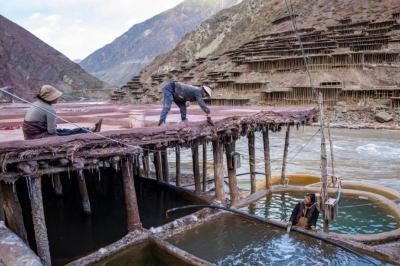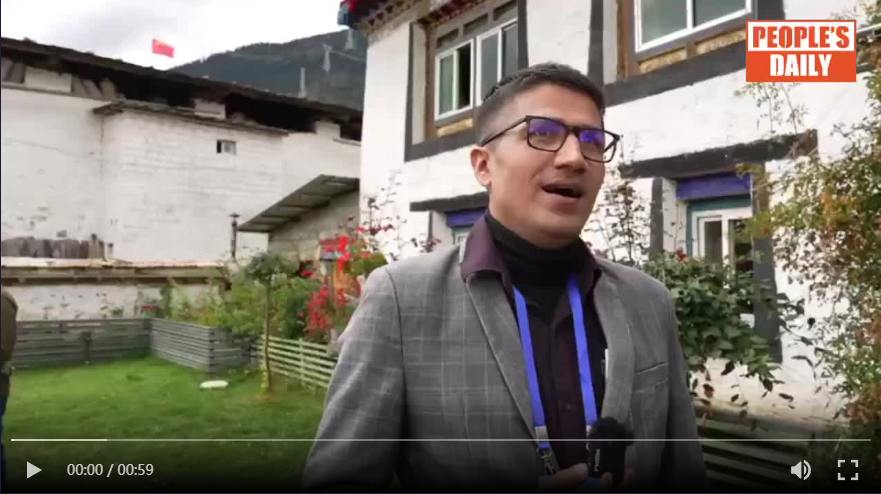| LHASA, March 18,2020 -- The sounds of roaring machines in the valley farmlands of Lhasa, capital of southwest China's Tibet Autonomous Region, broke the peace of the plateau city, as the spring farming ceremony was held on Monday.
Apart from Lhasa, all agricultural areas below 4,000 meters above sea level in the region began their spring farming on Monday.
In Sherong Village, around 50 km away from Lhasa, villagers dedicated white hada scarves, a traditional ceremonial scarf in Tibetan Buddhism, to agricultural machinery operators, who drove 60 cultivators into the farmland and tilled the earth, with women sowing highland barley seeds behind each machine.
Paldruk, one of the operators and a villager of Sherong was very excited. He got up early on Monday, dressed in traditional Tibetan clothes and decorated his cultivator carefully with yak skulls and hada scarves.
"For generations, yaks were used to plow the land. I didn't expect that we could use 'iron yaks' instead of real yaks in my generation. We decorated the facilities with real or wooden yak skulls to pass on traditional culture and recall old memories," the 48-year-old man said.
Paldruk owns over 2.7 hectares of land. He said the local government offers farmers fertilizer and seeds subsidies every year. "With the development of mechanization, we can save more time to make extra money."
Qoezhoen, a village official, said Sherong Village has around 307 hectares of farmland, which mainly plant highland barley, a crucial staple for Tibetans.
"With the construction of high-standard farmland and the popularization of agricultural machinery, more and more agricultural areas in Tibet have realized mechanization. In Sherong, there are 113 trucks, 58 loaders and 31 excavators," said Qoezhoen.
The spring farming ceremony in Gyaro Village, Doilungdeqen District in Lhasa started at 11:00 a.m. Monday. Different from previous years, villagers were required to have their temperatures checked before taking part in the ceremony, as part of the anti-epidemic efforts.
"The spring farming ceremony is a grand festival for us. All villagers, including some migrant workers, would return to the village to participate in the ceremony. But this year, only one person from one household is allowed to take part to avoid mass gatherings," said Wangdue, a 51-year-old villager.
He said that everybody volunteered to wear masks during the ceremony, and he feels everyone was as joyful as before.
After the villagers finished sowing seeds, they danced in a circle. Wangdue flung a handful of roasted highland barley flour up in the air and said: "May the weather be good this year and a good harvest in autumn."
Tibet plans to grow over 140,000 hectares of highland barley this year, with a total grain output of more than 1 million tonnes, according to the regional department of agriculture and rural affairs.
|
- Home
- News Tibet |Exclusive |China |World |Related News |Latest
- Documents White Papers |Others
- Photo Politics |Economy & Society |Culture & Religion |Human & Nature |Beautiful Tibet |Other Tibetan-Inhabited Area |Exchanges |Related
- Video News |Documentary |Micro-Video |Entertainment
- Art
- Tourism
- In Focus
- About Tibet






